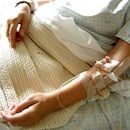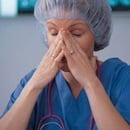
Best Practices: Fire Safety in the Operating Room
“Do no harm” is a tenet that guides healthcare professionals in their daily lives. Two hot topics that are stressed upon every year are Electrical and Fire Safety. In the operating room there are many opportunities during which electrical and fire-related injuries can occur. And while electrical mishaps can result in surgical fires, it is equally important to understand that these situations can occur completely independently of one another.
Electrical safety begins with a facility’s Biomed department. All electrical equipment used in an OR suite must first be tested and designated safe for use in the OR. All pieces of equipment should have a Biomed approved label with an ID number that is documented for all procedures and used to track defective equipment.
A simple way to prevent electrical injuries is by checking that the wiring is intact; equipment with frayed cords should not be used. Items that should be checked include the OR table, electrical surgical units (ESUs or Bovie devices), and warming equipment (such as a Bair Hugger). Extension cords should not be used in the OR, but if it is necessary, they should first be approved by Biomed.
Other ways to ensure electrical safety is to make sure to safely unplug devices. Unplug devices from the wall outlet; never unplug a device by pulling on the cord. And certainly, use your instincts. If you smell something “hot” or “burning,” investigate it by all means and don’t ignore it. Sometimes you can smell the problem before you can see it, and by alleviating the problem early on, you can have a tremendous impact on the outcome.
Fire prevention was added to The National Patient Safety Goals by The Joint Commission in 2005 (TJC, 2005). Understanding the elements of the fire triangle (oxygen, fuel, heat) can help to prevent surgical fires. An electrical cautery unit can certainly be a source of fires in the OR, but it is not the only cause. OR fires can also begin with lasers, argon beams, or fiber-optic light cords. Alcohol-based prep solutions can provide a source of fuel for a fire as well as the paper drapes used to cover the patient. A high concentration of oxygen provided by anesthesia is another component of the fire triangle.
Through proper training, mock fire drills, and a more conscientious effort, surgical suite fires can be reduced. When we work together as a team we all contribute to a safe patient environment.
Biography:
After 8 years as a trauma-trained Certified Surgical Technologist, Joy completed a Bachelor’s Degree in Nursing and transitioned her role from CST to RN in the OR. Ms. Rising has continued her work as both a circulating nurse and a scrub nurse in a variety of specialties at facilities ranging from small community hospitals to Level I trauma centers and enhanced her professional development by obtaining CNOR certification in 2013.
Reference:
Joint Commission on Accreditation of Healthcare Organization [TJC]. (2005). 2005 Ambulatory care national patient safety goals




